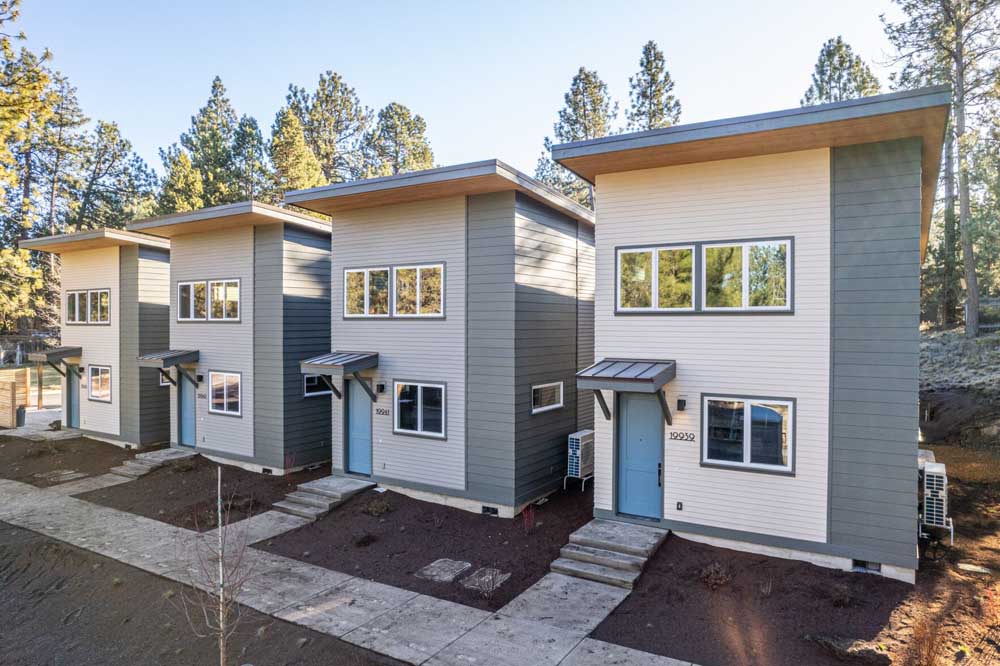Black-backed woodpecker
Published 5:00 am Monday, May 20, 2013
Discussion of the black-backed woodpecker quickly turns to debate about salvage logging after a wildfire. The environmental groups calling for federal protection for the bird say salvage logging takes away what habitat is available. Timber interests say there is plenty of burned woods being left behind.
Reports on both sides of the debate will likely be just part of the information the U.S. Fish and Wildlife Service will evaluate over the next year as it decides whether the black-backed woodpecker should be listed under the Endangered Species Act as a threatened or endangered species.
The agency announced in April that the population of the bird in the Oregon Cascades and Northern California, as well as a separate population in the Black Hills of South Dakota and Wyoming, may warrant ESA protection.
The Fish and Wildlife Service is asking anyone with information about the black-backed woodpecker, from casual birdwatchers to academic researchers, to send in what they have by June 10.
“What we are really looking for is information, scientific and commercial information, that will assist us in completing our status review,” said Karen Leyse, listing coordinator with the Fish and Wildlife Service Sacramento field office.
In May 2012, four environmental groups — the John Muir Project of Earth Island Institute, the Center for Biological Diversity, the Biodiversity Conservation Alliance and the Blue Mountains Biodiversity Project — petitioned the agency, arguing the black-backed woodpecker could be in peril.
“It is at a very significant risk of extinction in the coming decade if it is not listed,” said Chad Hanson, director of the John Muir Project in Northern California.
The grassroots group is a project of the Earth Island Institute, a nonprofit environmental organization based in Berkeley, Calif.
The black-backed woodpecker depends on recently burned, dense, older forest, he said. He points to studies showing that nesting pairs of the birds require about 200 to 400 acres of burned woods.
The combination of forest thinning to lower the intensity of wildfires along with salvage logging after a blaze has decreased the amount of habitat available for the bird in the Oregon Cascades and Northern California, as well as in South Dakota and Wyoming.
Timber interests have a different take on the situation for the black-backed woodpecker.
“It is the latest ploy, we feel, by the environmental community to try to stop any kind of salvage of burnt timber,” said Tom Partin, president of the American Forest Resource Council.
Membership in the council is made up of forest-product manufacturers and support companies in Oregon, California, Idaho, Montana and Washington.
Partin contends there is an overabundance of habitat for the bird, the result of wildfires each year. He says the complaints about salvage logging are unwarranted, estimating about 10 percent of the wood that is burned is logged.
Hanson and Partin both said they plan to submit information to the Fish and Wildlife Service about the black-backed woodpecker.
While the connection of black-backed woodpeckers to burned forests and the impact of salvage logging needs to be studied more before the Fish and Wildlife Service makes a determination about listing, Leyse said scientists do know the birds specialize in eating wood-boring beetles.
The black-backed woodpecker’s physical adaptations, such as a strong skull and three toes, allow it to hit trees harder and dig in deeper than many other woodpeckers. That allows them to extract wood-boring beetle larvae. Such beetles are mainly found in dead and dying trees, particularly trees killed by fire and bark beetles.
Black-backed woodpecker
Scientific name: Picoides arcticus
Characteristics: Sooty black back feathers camouflage against charred trees. Males have a yellow crown patch. Males and females have three toes, rather than the typical four for birds. Similar in size to a robin, about 9 inches long.
Breeding: Digs out cavities in trees for nests in spring; eggs typically hatch by early summer.
Habitat: Recently killed trees, particularly trees killed by fire or bark beetles.
Food: Mainly wood-boring beetle larvae
Source: Cornell Lab of Ornithology, American Ornithologists’ Union, U.S. Fish and Wildlife Service
To submit information
The U.S. Fish and Wildlife Service is taking information on the black-backed woodpecker, which is under an Endangered Species Act status review. To submit electronically, go to www.regulations .gov, search for Docket No. FWS-R8-ES-2013-0034. To submit by mail, send to Public Comments Processing, Attn: FWS-R8-ES-2013-0034, Division of Policy and Directives Management, U.S. Fish and Wildlife Service, 4401 N. Fairfax Drive, MS 2042-PDM, Arlington, VA 22203.






